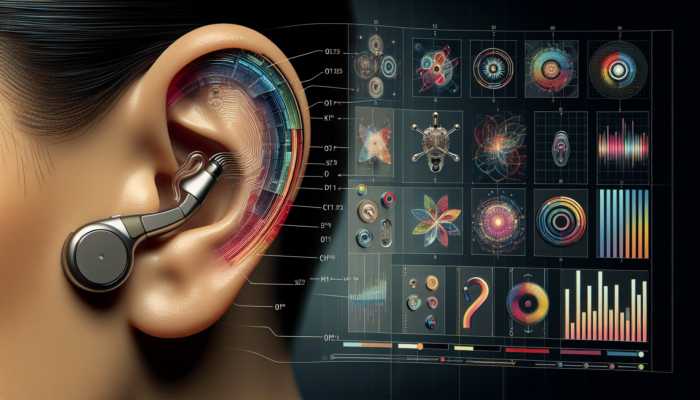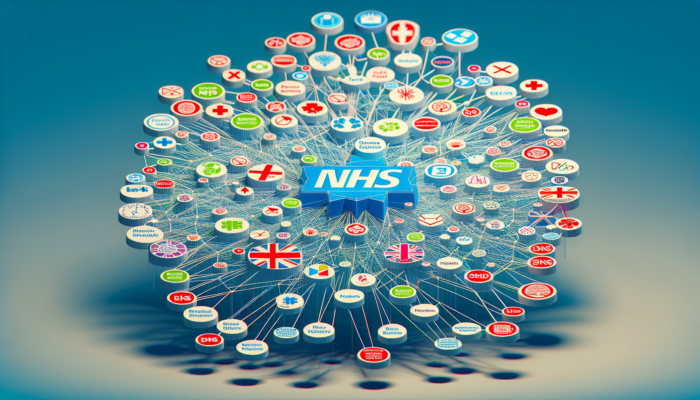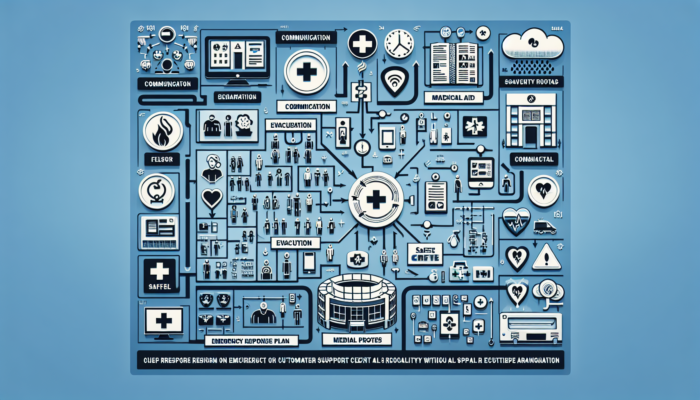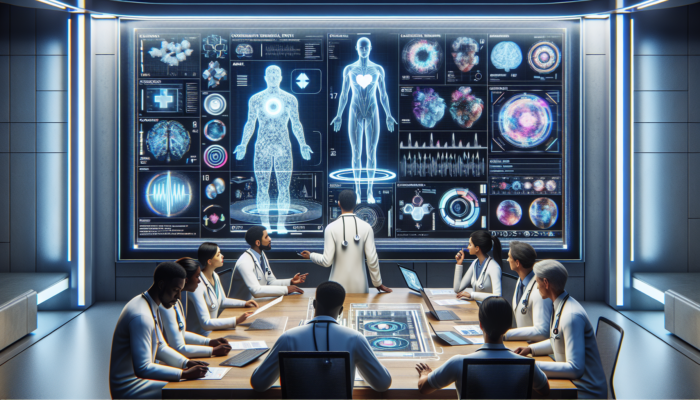Analog vs. Digital Hearing Aids: Key Differences Explained

Understanding Sound Processing in Hearing Aids
Exploring the Basics of Analog Sound Processing

Analog hearing aids operate by directly amplifying sound, making them an essential tool for individuals seeking to enhance their auditory experience. While these devices primarily focus on volume adjustments, they do not significantly improve the clarity of sounds. This straightforward approach can be particularly beneficial for people with mild hearing loss who may not require the advanced features found in modern devices. Having been in use for decades, analog aids offer a reliable solution for those looking to amplify environmental sounds effectively. They provide a uniform amplification of all sounds within a given environment, which can be especially advantageous in quieter settings. Despite their limitations in terms of sound clarity and the management of surrounding noise, their affordability and ease of operation make them a favored option for many users.
Users of analog aids often value the familiar and uncomplicated design of these devices. Many report high levels of satisfaction due to their cost-effectiveness and intuitive usage. However, challenges may arise in more complex auditory environments, such as bustling restaurants or lively social gatherings, where background noise tends to overwhelm the amplified sounds. The absence of sophisticated sound processing capabilities can lead to user frustration and a less than optimal auditory experience, highlighting the importance of recognizing the inherent limitations of analog technology in various listening situations.
Revolutionizing Hearing with Digital Sound Processing
Digital hearing aids have transformed the hearing aid industry by converting sound waves into digital signals. This advanced processing allows for precise adjustments in both clarity and volume, effectively catering to the unique hearing requirements of each user. Utilizing cutting-edge algorithms, digital aids can distinguish between speech sounds and background noise, significantly enhancing the listening experience. This feature proves invaluable in challenging auditory environments, enabling users to engage in conversations without straining to differentiate sounds.
One of the remarkable features of digital hearing aids is their capacity to process sound in real-time. Users can immerse themselves in a rich auditory landscape that is both clear and comfortable. Sophisticated digital models can even analyze their surroundings to automatically adjust settings based on the acoustics of the environment. This level of sophistication is crucial for individuals with moderate to severe hearing loss, allowing them to enjoy a more natural sound quality that enhances social interactions and reduces auditory fatigue.
Evaluating Sound Quality: Analog vs. Digital
When it comes to sound quality, the contrast between analog and digital hearing aids is evident. Digital aids typically deliver superior sound quality along with enhanced noise reduction features. Users of digital devices frequently report a more natural sound experience, with the capability to filter out unwanted noise while concentrating on desired sounds, such as conversations. This selective amplification capability can lead to higher satisfaction levels and improved communication during various social interactions.
In contrast, analog aids amplify all sounds uniformly, which can make it challenging for users to discern speech amidst background noise. For example, an individual using an analog hearing aid in a crowded café may find it difficult to engage in conversation due to the overwhelming sounds of chatter and clattering dishes. The ability of digital aids to selectively amplify specific frequencies allows for clearer distinctions in sound, proving invaluable in everyday interactions. With the continuous evolution of digital technology, sound processing capabilities are advancing, ensuring that users receive the best possible auditory experience.
Exploring Customization Options for Hearing Aids

Analog Hearing Aids: Limited Customization Features
Customization options for analog hearing aids are relatively minimal. Users generally have the ability to adjust the volume manually, which may address basic hearing needs but lacks the ability for fine-tuning. This simplicity can appeal to users who prefer a straightforward experience without technical complications. However, the absence of customization options can lead to discomfort in varying environments, as users might struggle to adapt their devices to different sound levels and qualities experienced throughout their day.
For individuals with specific patterns of hearing loss, such as high-frequency loss, the inability to customize sound frequencies can be a significant limitation. Analog aids typically lack the advanced programming options that digital aids provide. Users may find themselves adjusting their listening environment rather than their devices, which can diminish their overall experience. Consequently, individuals experiencing more complex hearing challenges may find that exploring digital options offering tailored settings can greatly enhance their listening experience.
Maximizing Personalization with Digital Customization
Digital hearing aids are equipped with extensive customization capabilities, enabling users to create personalized listening preferences that align with their unique hearing profiles. These devices can be programmed with specific settings tailored for various environments, including quiet rooms, bustling streets, or crowded gatherings. Users can access these custom settings through specialized software, providing them the flexibility to adjust their hearing aids to suit their daily activities and specific auditory challenges.
The customization tools available for digital aids significantly enhance user comfort and overall satisfaction. By tailoring the audio experience to meet individual needs, users can enjoy a more natural sound environment that encourages effortless navigation through different auditory challenges. This personalized approach not only facilitates more engaging and fulfilling social interactions but also improves the overall quality of life. Furthermore, many digital aids now feature smartphone connectivity, allowing users to make real-time adjustments, further enhancing their auditory experience.
Enhancing User Experience Through Customization

The ability to customize digital hearing aids is pivotal in enriching the user experience. Many users report that having the option to adjust settings according to their surroundings leads to increased comfort and satisfaction. This level of personalization empowers users, enabling them to feel more in control of their hearing, which alleviates the stress often associated with navigating various listening environments. The freedom to adapt their hearing aids to suit different scenarios allows users to engage more fully in conversations and activities.
Moreover, the precision offered by digital aids can foster greater confidence in social settings, where hearing challenges are common. Users can participate in discussions without the persistent worry of missing out on critical details. This enhanced comfort not only improves their auditory experience but also positively impacts their overall well-being. The emphasis on personalization serves as a significant advantage of digital hearing aids, contributing to a more enjoyable and fulfilling life for individuals with hearing loss.
Advanced Customization Tools and Software for Hearing Aids
A variety of software tools are available for digital hearing aids, enabling users to make precise adjustments that align with their specific hearing requirements. These tools allow both audiologists and users to program hearing aids based on individual preferences and types of hearing loss. Software enhancements can encompass frequency adjustments, noise reduction settings, and specific amplification levels tailored to the user’s environment, ensuring optimal auditory performance.
Modern digital hearing aids often come equipped with companion apps for smartphones, allowing users to control their devices remotely. They can adjust volume levels or switch between settings with ease through these apps. Such convenience not only simplifies the process of adapting to different environments but also fosters greater engagement with their hearing aids. With the integration of advanced technology, the customization process has become increasingly user-friendly, ensuring that individuals can optimize their hearing experience to meet their lifestyles effectively.
Exploring Technology and Features in Hearing Aids
Understanding Analog Technology in Hearing Aids
Analog hearing aids operate on simpler technological platforms, which, while effective for a broad range of users, often lack the advanced features that are characteristic of modern hearing aids. Their primary function is to amplify sound, rendering them a cost-effective option for individuals experiencing mild to moderate hearing loss. However, this simplicity comes at the cost of additional features that significantly enhance the listening experience, including Bluetooth connectivity and sophisticated sound processing algorithms.
The straightforward nature of analog technology may be appealing for users who favor minimal fuss and ease of use. These devices do not require complex programming or intricate adjustments, which can be a considerable advantage for older individuals or those who prefer a traditional approach to hearing assistance. However, the trade-off is that users may miss out on the benefits provided by more advanced hearing technologies, especially in complex auditory environments. As the demand for feature-rich options increases, many individuals are opting for digital aids to leverage the latest advancements in hearing technology.
Harnessing the Power of Digital Technology in Hearing Aids
Digital hearing aids signify a remarkable progression in auditory technology, featuring advanced functionalities that substantially enhance the user experience. These devices utilize digital signal processing to deliver clearer sound quality, effective noise reduction, and feedback management. Furthermore, numerous digital aids now offer Bluetooth connectivity, enabling users to stream audio directly from their smartphones or other devices, which is particularly beneficial for those who enjoy listening to music or participating in phone calls.
Additionally, the incorporation of directional microphones within digital aids allows users to concentrate on sounds originating from specific directions while minimizing background noise. This feature is especially advantageous in crowded environments, such as busy restaurants or public transport, where distinguishing speech from surrounding noise can be challenging. The continuous evolution of digital hearing aids ensures that users can expect ongoing improvements in features and functionalities, keeping them at the forefront of hearing technology.
Anticipating Future Trends in Hearing Aid Technology
The horizon for hearing aid technology is promising, with digital devices anticipated to evolve further through ongoing research and development efforts. Emerging technologies, including artificial intelligence and machine learning, are set to revolutionize the hearing aid experience, potentially leading to even more personalized listening experiences where devices learn users’ preferences and automatically adjust settings based on their environments.
Moreover, the integration of telehealth services within hearing care represents another exciting trend on the horizon. Remote programming and adjustments can enable audiologists to fine-tune settings from a distance, providing users with enhanced convenience and accessibility. As digital hearing aids continue to adapt to the evolving needs of users, they are likely to become increasingly sophisticated, ensuring that individuals with hearing loss enjoy the best auditory experience possible.
Understanding Maintenance and Durability in Hearing Aids
Maintenance Requirements for Analog Hearing Aids
In terms of maintenance, analog hearing aids typically require less technical upkeep compared to their digital counterparts. Users often find that they need to make occasional volume adjustments, but overall, the simplicity of their technology means there are fewer components to manage. This straightforwardness can be appealing for users seeking a device that is easy to maintain without the necessity for regular software updates.
However, while analog aids may demand less technical maintenance, they often require more frequent adjustments to ensure optimal performance. Users might need to visit audiologists for fine-tuning or repairs, as wear and tear can impact the amplification quality over time. Additionally, the durability of analog aids tends to be lower than that of digital aids, as the technology does not benefit from the more robust materials and design enhancements seen in newer models.
Maintenance Considerations for Digital Hearing Aids
Digital hearing aids, while generally more durable, require regular software updates and maintenance to function optimally. This includes periodic checks and adjustments performed by audiologists to refine settings and ensure the technology operates efficiently. The advanced features of digital devices, such as noise reduction and feedback cancellation, may also necessitate updates to maintain their peak performance.
Despite the need for more frequent technical maintenance, many users find that the benefits of digital aids far outweigh the upkeep demands. Their increased reliability and longevity often make them a worthwhile investment. Furthermore, with proper care and routine check-ups, digital hearing aids can provide users with years of enhanced hearing experiences, proving to be a durable choice for those experiencing hearing loss.
Evaluating the Cost of Hearing Aid Upkeep
The cost of upkeep for hearing aids can vary significantly between analog and digital devices. Analog aids typically have lower initial costs and minimal ongoing expenses, making them an appealing option for budget-conscious individuals. However, the frequent adjustments required may ultimately lead to increased long-term costs, as users will need to make regular visits to audiologists for maintenance and fine-tuning.
Conversely, digital hearing aids generally feature higher initial prices and may involve more considerable ongoing costs due to software updates and potential repairs. Nevertheless, the advanced features and benefits they offer often justify the investment for users facing more complex hearing challenges. When considering the cost of upkeep, individuals must weigh both the financial implications and the overall improvements in quality of life that hearing aids can provide.
Assessing Power and Battery Life in Hearing Aids
Power Consumption in Analog Hearing Aids
Analog hearing aids usually consume less power than digital models, resulting in extended battery life. This energy efficiency can be particularly beneficial for users who prefer minimal hassle associated with frequent battery replacements. The straightforward operation of analog devices means that users can usually rely on them for longer periods before needing to change batteries, enhancing the overall user experience.
However, while the extended battery life is a significant advantage, it is vital to recognize that the sound processing capabilities of analog aids are limited. Users may find themselves sacrificing sound quality and advanced features in favor of longevity. This trade-off emphasizes the importance of understanding personal hearing needs and how they align with available technology choices.
Power Usage in Digital Hearing Aids
Digital hearing aids typically consume more power due to their advanced processing capabilities and features. As a result, users may have to change batteries more frequently compared to analog aids. Although this increased power consumption may be seen as a downside, many digital hearing aids now incorporate rechargeable batteries, providing a convenient solution that eliminates the need for regular battery changes.
The transition towards rechargeable technology not only addresses the power consumption issue but also enhances user convenience. Many users appreciate the ability to charge their hearing aids overnight, ensuring they are ready for the day ahead. Overall, advancements in battery technology are consistently improving the power efficiency of digital devices, helping to alleviate concerns related to battery life.
Innovations in Battery Technology for Hearing Aids
Battery technology is undergoing significant evolution, with improvements expected to benefit both analog and digital hearing aids. New developments in battery efficiency and longevity are set to enhance the overall performance of hearing aids, allowing users to enjoy longer durations of use without the need for frequent replacements. These advancements will cater to the growing demand for more reliable and user-friendly hearing solutions.
Innovations such as lithium-ion batteries are becoming increasingly common in digital aids, offering users greater convenience and efficiency. The trend towards rechargeable options is likely to shape the future of hearing aids, allowing for fewer concerns regarding battery changes and enhancing the overall user experience. As technology continues to advance, the benefits of improved battery technology will play a critical role in defining the next generation of hearing aids.
Accessibility and Affordability of Hearing Aids
The Affordability of Analog Hearing Aids
Analog hearing aids are often more affordable and widely available, making them suitable for individuals with basic hearing needs. Their lower price point makes them an attractive option for those who may not have the financial resources to invest in more technologically advanced devices. This accessibility allows individuals from various economic backgrounds to obtain the hearing assistance they need without incurring significant expenses.
However, while analog aids serve as a budget-friendly solution, their limited features may not adequately meet the needs of users with more complex hearing loss. Individuals requiring advanced functionality may ultimately benefit from investing in digital aids, despite the higher initial costs. The affordability of analog devices underscores the importance of evaluating personal hearing needs against long-term benefits versus upfront expenses.
Digital Hearing Aids: Accessibility and Investment
While digital hearing aids typically come with a higher price tag, they offer advanced features that are crucial for managing complex hearing loss. Their ability to deliver superior sound quality, effective noise reduction, and extensive customization options can significantly enhance the lives of users with moderate to severe hearing challenges. Investing in digital aids can lead to improved social interactions and overall quality of life for many individuals.
Despite their higher costs, numerous manufacturers and organizations provide financing options and assistance programs to facilitate access to the technology individuals need. Additionally, as technology continues to evolve, the prices of digital aids may decrease, making them more accessible to a broader population. This shift toward affordability in digital hearing aids is essential for ensuring that everyone has the opportunity to experience enhanced hearing capabilities.
Financial Considerations When Choosing Hearing Aids
Deciding between analog and digital hearing aids often depends on budget considerations and the severity of hearing loss. Individuals with mild hearing loss may find analog aids sufficient for their needs, while those facing more complex challenges might benefit significantly from the advanced features offered by digital aids, justifying the higher investment. Users must carefully assess their financial situations in relation to their hearing requirements to make an informed choice.
Additionally, it is crucial to consider the ongoing costs associated with hearing aids, such as maintenance, battery replacements, and necessary adjustments. While analog aids may have lower upfront costs, the cumulative ongoing expenses can add up over time. Ultimately, the decision between analog and digital aids should take into account both immediate financial implications and long-term quality of life improvements to ensure the best auditory experience possible.
User Feedback and Satisfaction with Hearing Aids
Insights from Analog Hearing Aid Users
Users of analog hearing aids frequently express satisfaction stemming from the simplicity and cost-effectiveness of these devices. Many appreciate the straightforward operation that does not require technical knowledge or complicated settings. For individuals who prefer a no-frills approach to hearing assistance, analog aids provide a familiar and effective solution that meets their basic needs.
However, feedback from users also highlights several limitations. Many individuals experience frustration in noisy environments where background noise can interfere with their ability to hear conversations clearly. While analog aids serve well for basic amplification, those who require more sophisticated sound management may find themselves leaning toward digital options as their hearing needs evolve. This dichotomy emphasizes the significance of individual assessment in selecting the most appropriate hearing aids.
Experiences of Digital Hearing Aid Users
Users of digital hearing aids often express appreciation for the advanced features and extensive customization options available to them. The ability to adjust settings according to specific listening environments greatly enhances user satisfaction. Many individuals report feeling more confident in social situations, where clear communication is crucial, thanks to the superior sound quality and effective noise reduction capabilities of digital aids.
Feedback from users also highlights the learning curve associated with digital devices. Some may initially feel overwhelmed by the technology; however, they often discover that the benefits far outweigh the initial challenges. The overall trend indicates an increase in satisfaction with digital aids as users become more accustomed to their features and functionalities. This growing trend reflects a broader recognition of the importance of tailored hearing solutions in enhancing quality of life.
Trends in Overall Satisfaction with Hearing Aids
There is a noticeable shift towards digital hearing aids, driven by their enhanced capabilities and user satisfaction. As more individuals become aware of the advantages of advanced technology, they are increasingly opting for digital solutions. This trend is not solely due to superior sound quality and customization options but also reflects the improved functionality that digital aids offer in various listening environments.
Furthermore, the ongoing evolution of digital technology, including the integration of artificial intelligence and telehealth services, continues to positively shape user experiences. As individuals explore the benefits of digital aids, many report significant improvements in their overall hearing satisfaction, emphasizing the importance of staying updated with technological advancements.
Comparative Feedback on Analog and Digital Hearing Aids
Users frequently compare the reliability and ease of use of analog aids with the technological advantages and learning curve associated with digital aids. Many appreciate the straightforward nature of analog technology, particularly for addressing basic hearing needs. However, as users’ hearing challenges become more pronounced, they may find themselves drawn to digital aids for their comprehensive features and adaptability.
The feedback illustrates an ongoing dialogue between simplicity and advanced functionality. While analog aids remain a viable option for some, digital aids are increasingly favored for their ability to offer tailored solutions that cater to complex hearing requirements. This ongoing evolution in user preferences underscores the importance of understanding the diverse needs of individuals with hearing loss.
Frequently Asked Questions About Hearing Aids
What distinguishes analog hearing aids from digital ones?
The primary distinction lies in sound processing: analog aids amplify sound directly, while digital aids convert sound into digital signals for precise adjustments in clarity and volume.
Which hearing aid type excels in handling background noise?
Digital hearing aids are generally superior for managing background noise due to their advanced sound processing capabilities, which allow users to focus on specific sounds.
Are analog hearing aids more affordable than digital models?
Yes, analog hearing aids tend to be less expensive upfront, but they may lack advanced features and require more frequent adjustments, impacting long-term costs.
How frequently should I change the batteries in my hearing aids?
The frequency of battery changes varies; analog aids typically have longer battery life, while digital aids may require more frequent changes due to their power consumption.
Can I customize my digital hearing aids to suit my needs?
Absolutely, digital hearing aids offer extensive customization options, allowing users to program settings based on their specific listening environments and preferences.
What features can I expect from digital hearing aids?
Digital hearing aids often include features such as Bluetooth connectivity, directional microphones, and advanced noise reduction capabilities that enhance user experience.
Is a prescription necessary for obtaining hearing aids?
Yes, a prescription or consultation with an audiologist is typically recommended to determine the most suitable hearing aid for your specific needs.
How long do hearing aids usually last?
On average, hearing aids can last about 3 to 5 years, but this lifespan can vary depending on the type of device and how well it is maintained.
Are rechargeable hearing aids a worthwhile investment?
Yes, rechargeable hearing aids can provide convenience by eliminating the need for frequent battery changes, making them a popular choice among users.
What steps can I take to enhance my hearing aid experience?
Regular maintenance, proper fitting, and utilizing customization options can significantly improve your overall hearing aid experience.
Discover our journey on X!
The post Analog vs. Digital Hearing Aids: Key Differences Explained appeared first on The Microsuction Ear Wax Removal Network.






























































